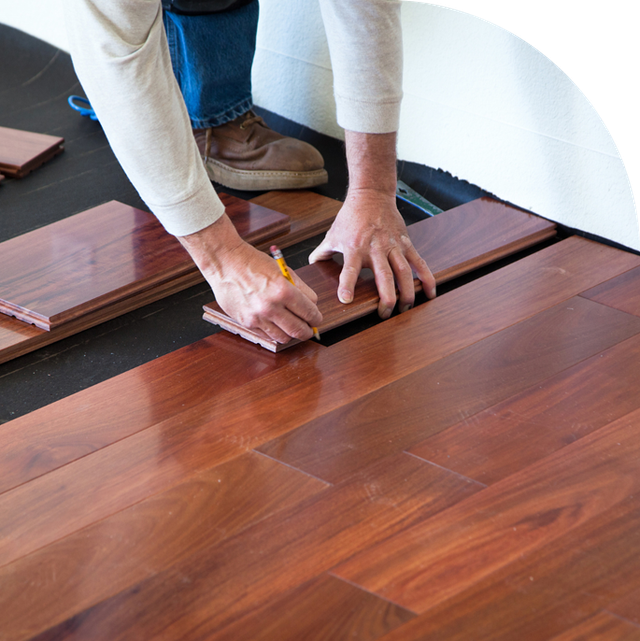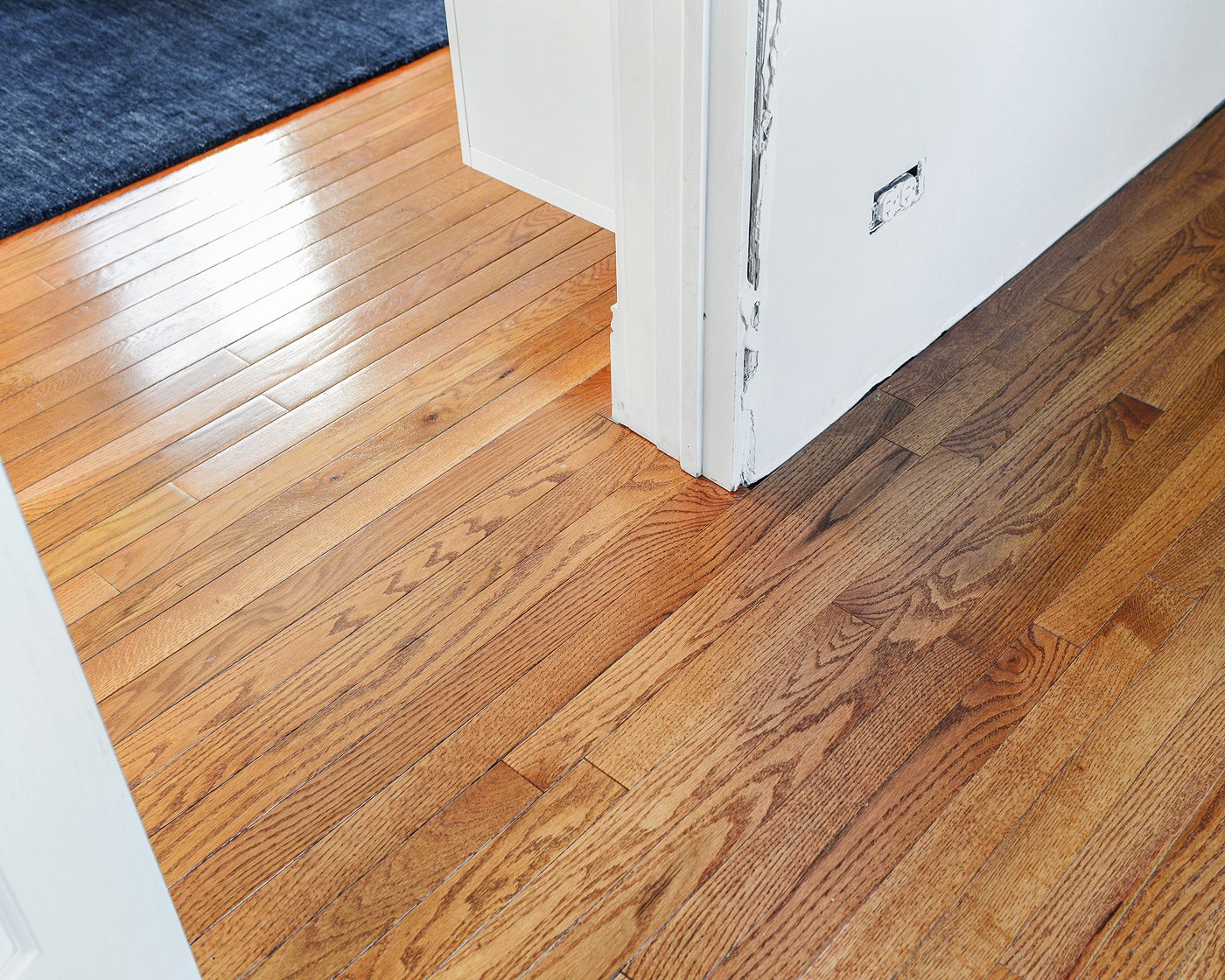A Step-by-Step Guide to Install Hardwood Floors Like a Pro
A Step-by-Step Guide to Install Hardwood Floors Like a Pro
Blog Article
Cutting-edge Floor Covering Solutions: A Comprehensive Guide to Different Types of Floor Covering Products
Hardwood flooring continues to be a traditional choice, commemorated for its sophistication and resilient appeal. Alternatively, laminate floor covering offers a budget-friendly choice that carefully mimics all-natural structures. Vinyl's water resistance and convenience of setup make it a sensible choice, and floor tile floor covering stands out for high-traffic areas due to its robustness.
Hardwood Floor Covering
Among the countless floor covering choices available, hardwood floor covering sticks out for its timeless sophistication and sturdiness. Renowned for its all-natural beauty and the capability to enhance different indoor styles, hardwood continues to be a recommended option for homeowners and developers alike. Readily available in a variety of species such as oak, cherry, and maple, wood floors supply abundant color variations and special grain patterns that can enhance the aesthetic charm of any kind of space.
Hardwood flooring is not just aesthetically enticing but likewise very durable. When appropriately kept, it can last for decades, making it an affordable lasting financial investment. The surface area can be sanded and refinished multiple times, enabling for the reconstruction of its initial radiance and the capability to adapt to altering layout patterns.
Additionally, hardwood floors contribute to enhanced interior air high quality, as they do not catch dirt, pet dog dander, or other allergens typically discovered in rugs. This top quality makes them an excellent choice for homes with allergic reaction patients. The simplicity of cleansing and maintenance further improves their functionality.
Laminate Flooring
Laminate flooring offers a affordable and flexible alternative to traditional hardwood floorings. Engineered to resemble the look of natural wood, laminate floor covering consists of several layers, including a high-density fiberboard core and a photo applique layer that duplicates wood grain patterns. This not only gives visual charm but also ensures resilience and resistance to damage.
One of the primary benefits of laminate floor covering is its simplicity of installation. Furthermore, laminate flooring is offered in a vast variety of shades, styles, and structures, making it possible to accomplish numerous design appearances.
Maintenance of laminate floor covering is remarkably easy. Its leading layer is designed to resist scrapes, discolorations, and moisture, needing just normal sweeping and periodic damp mopping to preserve its look. While it's not completely resistant to water, laminate floor covering is more resistant to wetness than typical hardwood, making it suitable for areas with higher humidity levels, such as kitchen areas and cellars.
Plastic Flooring
Plastic floor covering, a resistant and extremely functional alternative, has actually obtained appeal as a result of its impressive sturdiness and substantial layout adaptability. This kind of floor covering is produced from artificial materials, mainly polyvinyl chloride (PVC), which supplies resistance to water, stains, and use, making it an ideal option for high-traffic areas and moisture-prone areas such as shower rooms and kitchen areas.
One of the essential advantages of plastic floor covering is its capability to simulate the appearance of natural products like timber, stone, and ceramic tiles, often at a portion of the price. Advanced printing innovations and embossing methods enable realistic appearances and patterns, supplying house owners and designers a vast selection of visual options to enhance any kind of design.
Moreover, plastic flooring is offered in numerous forms, consisting of floor tiles, sheets, and planks, each catering to various installation preferences and job needs - refinishing hardwood floors. Deluxe Vinyl Plank (LVP) and Luxury Plastic Tile (LVT) are specifically favored for their improved density and practical visuals. Installation is fairly uncomplicated, with options for glue-down, click-lock, or loose-lay methods, contributing to official statement its charm for DIY professionals and lovers alike
Along with its aesthetic and sensible benefits, vinyl flooring boasts low maintenance requirements, needing only regular sweeping and periodic wiping to preserve its appearance.
Ceramic Tile Floor Covering
While plastic floor covering uses versatility and cost, ceramic tile flooring sticks out for its classic style and outstanding resilience. This type of flooring, available in materials such as ceramic, porcelain, and natural stone, gives a sophisticated aesthetic appeal that matches both business and household rooms. Its resistance to dampness and spots makes it an excellent choice for high-traffic locations like cooking areas, restrooms, and entrances.
Ceramic ceramic tiles, crafted from clay that is fired at high temperature levels, are understood for their strength and convenience. They can be found in a myriad of layouts, including numerous colors, patterns, and appearances, permitting endless modification. Porcelain floor tiles, a subtype of ceramic, are denser and much more resistant to water, making them appropriate for both outdoor and interior applications.
Natural stone floor tiles, such as granite, slate, and marble, use a special, elegant look that includes significant worth to any More about the author property. Each stone floor tile is distinct, adding to an one-of-a-kind flooring surface. In addition, the sturdiness of all-natural my company stone makes sure a lasting financial investment.

Eco-Friendly Options
Accepting sustainability in flooring options, environment-friendly choices are acquiring appeal for their minimal ecological impact and cutting-edge layout. Bamboo flooring, derived from fast-growing bamboo yard, provides the firmness and durability of traditional hardwood but regrows much quicker, making it an eco-friendly source.
Cork flooring, gathered from the bark of cork oak trees, is another sustainable selection. The harvesting procedure does not damage the trees, permitting them to proceed absorbing and growing co2. Cork is naturally hypoallergenic, resistant to mold and mildew and mold, and supplies excellent thermal and acoustic insulation, making it both a sensible and eco friendly alternative.
Reclaimed timber is one more significant reference. Sourced from old structures, barns, and factories, this product not just reduces the need for new timber but likewise adds a special, aged personality to interiors. Furthermore, recycled rubber floor covering, often made from repurposed tires, supplies sturdiness and strength, perfect for high-traffic locations.
Through these environmentally friendly floor covering options, homeowners and developers can accomplish both aesthetic allure and environmental obligation, adding to a more lasting future. refinishing hardwood floors.

Conclusion
Finally, the diverse array of ingenious floor covering remedies readily available caters to a vast variety of aesthetic choices and useful needs. Wood offers ageless style and toughness, while laminate gives an affordable choice that imitates natural appearances. Vinyl floor covering guarantees water resistance and convenience of installation, and tile flooring combines strength snappy for high-traffic areas. Environmentally friendly alternatives such as bamboo, cork, and reclaimed timber stress sustainability, allowing the development of attractive and ecologically responsible spaces.
Vinyl's water resistance and ease of setup make it a practical choice, and tile flooring stands out for high-traffic areas due to its toughness (flooring companies in charleston sc).Among the numerous floor covering options available, hardwood floor covering stands out for its timeless style and resilience. While it's not completely invulnerable to water, laminate floor covering is extra resistant to dampness than traditional wood, making it suitable for locations with higher humidity degrees, such as kitchen areas and basements
While vinyl flooring uses convenience and price, tile floor covering stands out for its classic style and exceptional toughness. Vinyl floor covering ensures water resistance and simplicity of installment, and floor tile floor covering integrates stamina with style for high-traffic locations.
Report this page